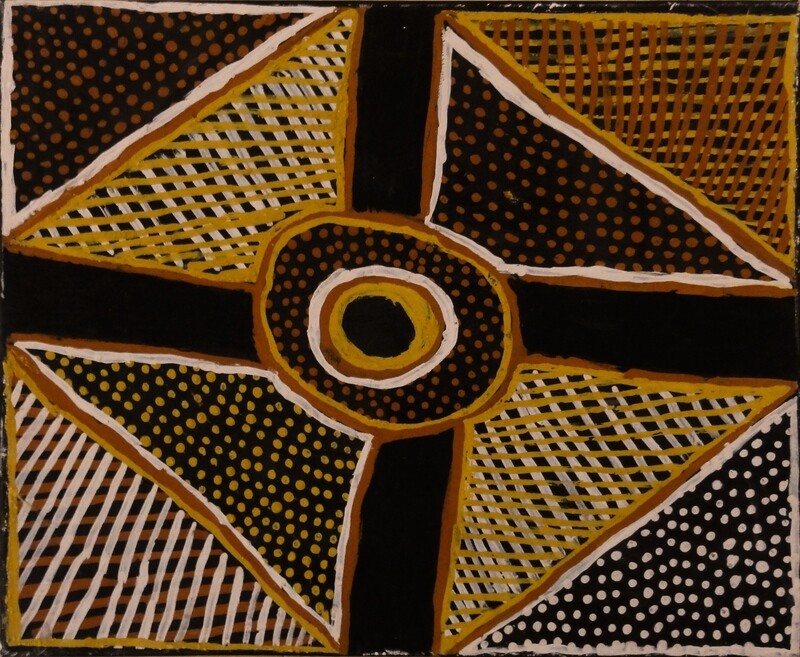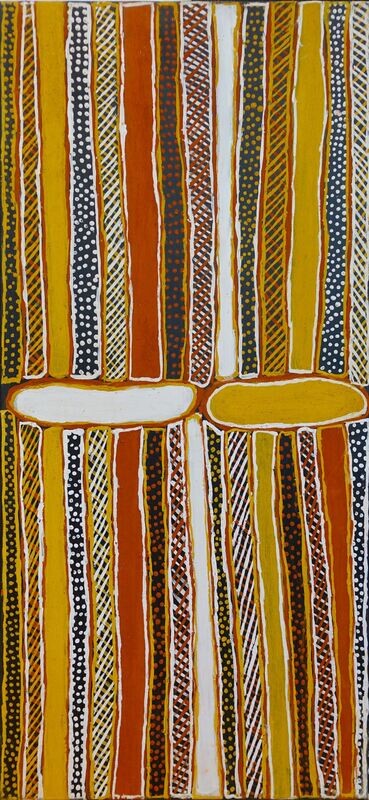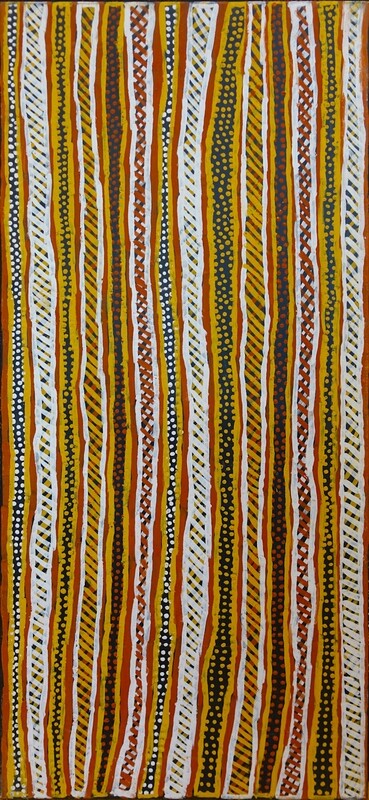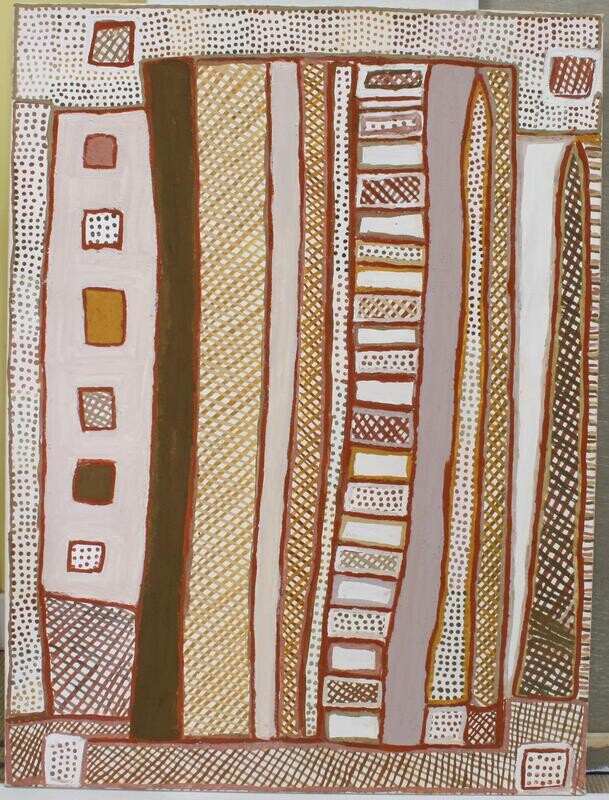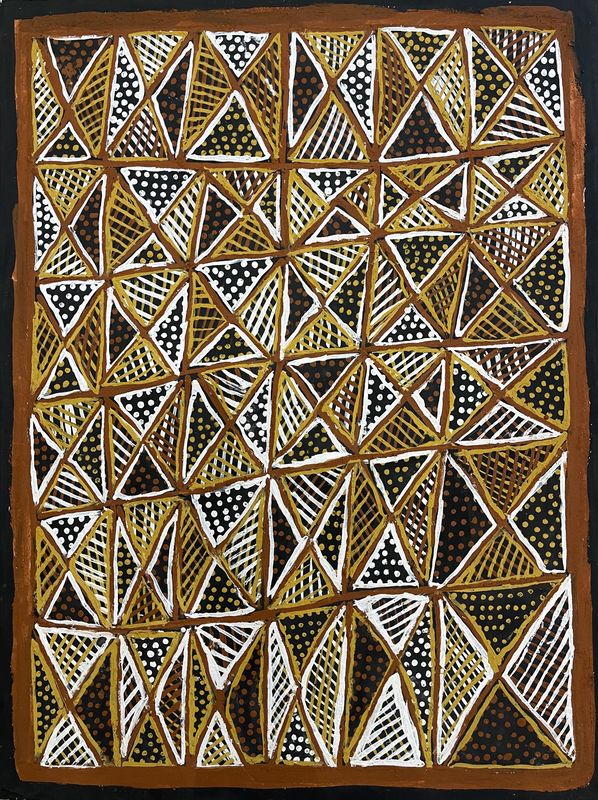Jean Baptiste Apuatimi
Jean Baptiste Apuatimi is a senior Tiwi Island artist who recreates and interprets body painting designs used in Tiwi Ceremony. “I love my painting, I love doing it. My husband, Declan Apuatimi taught me to paint. The designs are ones he taught me. He said ‘One day you will be an artist, you will take my place.’ Now I am doing that. Painting makes me alive.”
Born at Pirlangimpi (Garden Point) on Melville Island in 1940, named Pulukatu by her father, Jean Baptiste Apuatimi country is Imalu, from her father’s country, and also her husband’s country. Her skin group is Tapatapunga (March Fly), from her mother. When she was a young girl, the family moved to Nguiu (Wurrumiyanga) on Bathurst Island, where she lived at the convent and was educated and cared for by the nuns from the Catholic mission.
At the age of 14 her parents chose Declan Apuatimi as her husband, and they were one of the first Tiwi couples to be married in a Catholic ceremony. Declan was a renowned dancer, singer and the pre-eminent Tiwi artist of his time. During their life together she watched him create poles for important ceremonies (the Pukumani and Kurlama ceremonies) which lie at the heart of Tiwi culture. Declan taught Jean how to mix ochres and paint. They had eleven children together, of which only six survived. Their loss was so profound that in each Pukumani ceremony thereafter Declan danced in memory of his lost children.
When her husband passed away in 1985, Jean moved back to Milikapiti, Melville Island, where she painted alongside Kitty Kantilla.
Jean first works of art were included in group shows from 1991 onward, though it was not until 1997 that she became a full time artist for the Tiwi Design Aboriginal Corporation. She was to become an expert in various other media, including printmaking.
For Jean Baptiste Apuatimi, painting is a way of remembering her late husband and mentor Declan Karrilikiya Apuatimi who, in teaching her to carve and paint, passed on his personal jilamara (design), which survives in a dramatically re-interpreted expression found in her work. Whilst the influence of her husband is evident, there is much to indicate that there was a collaborative input in her husbands work which is largely unacknowledged. After his passing, and once she focused on painting in her own name, Jean Baptiste immersed herself in making art, forging a radical individual style
The source of the artist’s vigorous carving style, figurative iconography, spontaneously painted designs of pwanga amintiya marlipinyini (dots and lines) and bright ochre palette undoubtedly lies in Declan’s inspirational oeuvre, much of which was produced collaboratively with her, if largely unacknowledged. But once she focused on painting in her own name, Jean Baptiste immersed herself in making art and gradually forged a radical individual style… “ recognisable for its gestural verve, audacious jilamara and oscillation between figuration and conceptual abstraction. The potency of her innovative aesthetic derives from both its compositional expansiveness and close connection with customary ritual. ” Source: National Gallery of Australia (NGA)
Jean passed away in March 2013.

